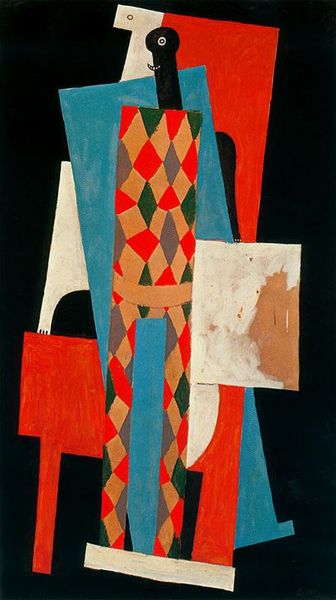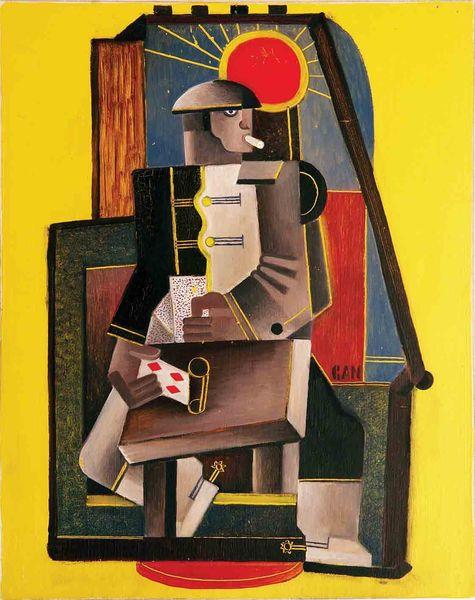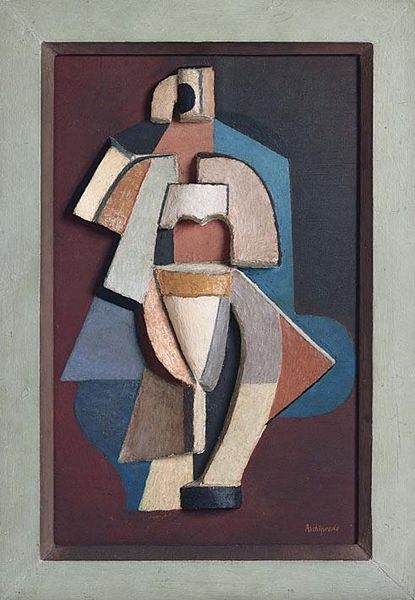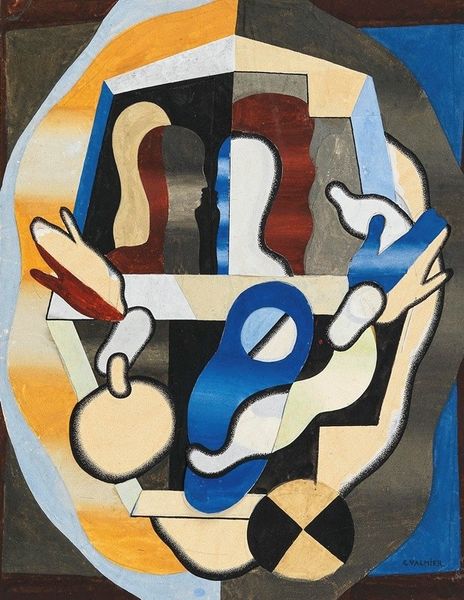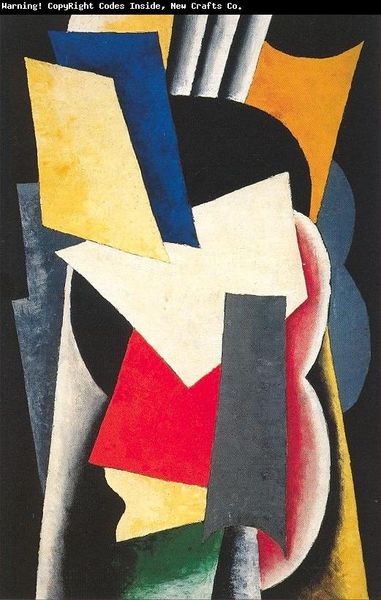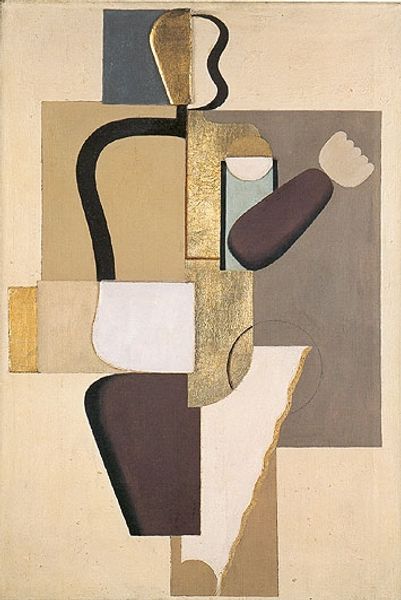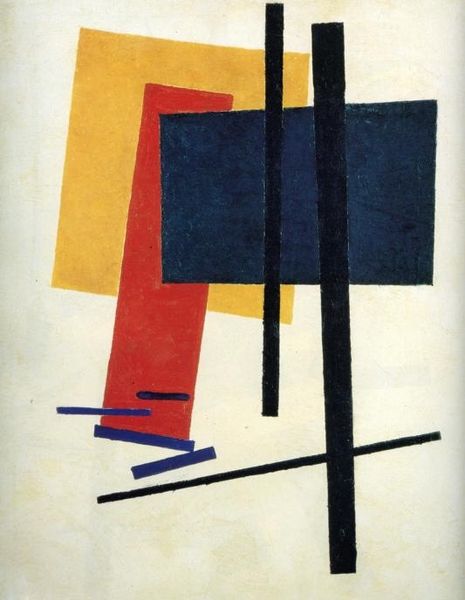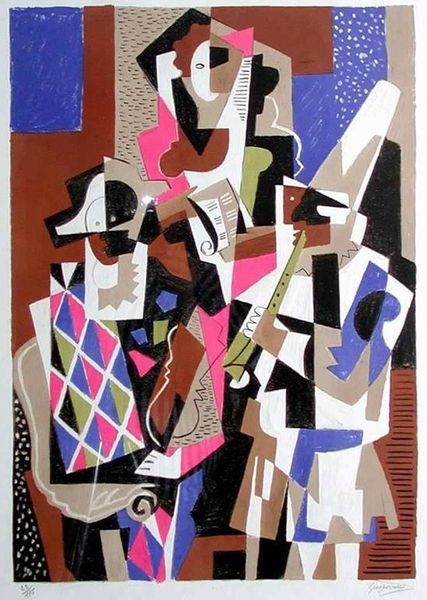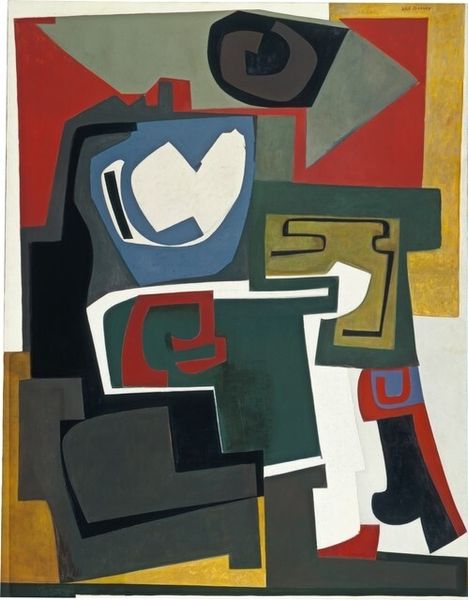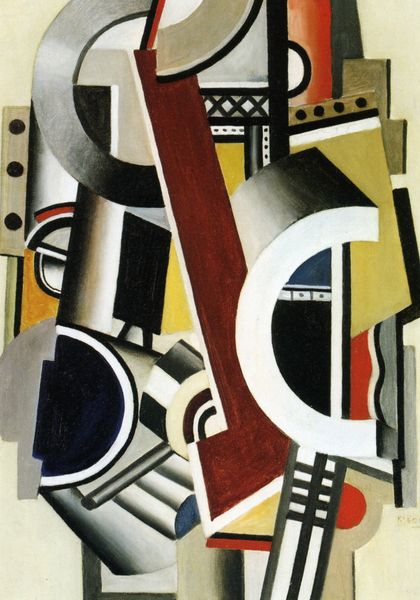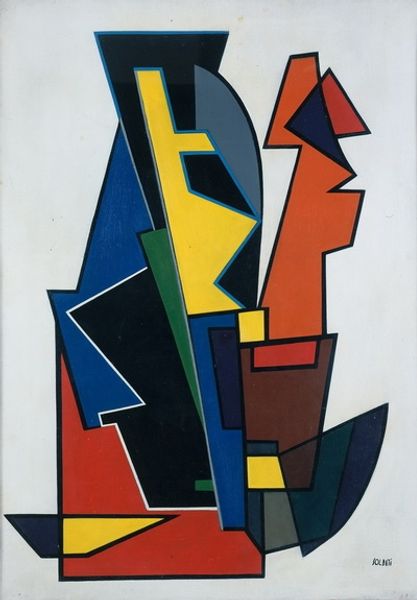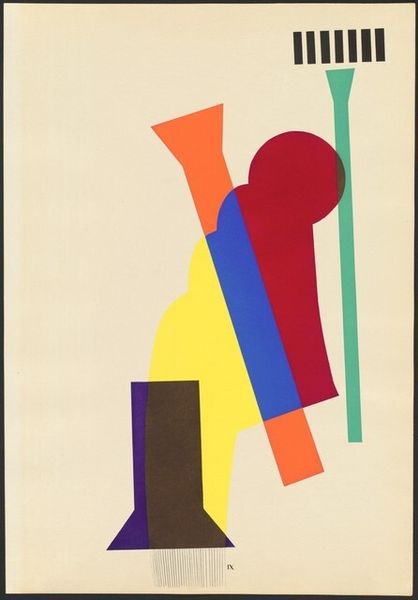
collage, painting, acrylic-paint
#
cubism
#
collage
#
painting
#
typography
#
pop art
#
acrylic-paint
#
form
#
geometric
#
geometric-abstraction
#
abstraction
#
line
#
modernism
Copyright: Carlos Merida,Fair Use
Curator: Looking at Carlos Merida's "The Prodigal Son" from 1973, done in painting and collage with acrylic paint, it feels like the weight of old stories, somehow flattened and refracted. Editor: I see this and immediately feel…a constructivist hangover? There’s something about the rigid forms, the limited palette, and the assertive typography that shouts "propaganda!" But is it joyful, or warning us of a sad homecoming? Curator: Merida's work often explores a fusion of geometric abstraction with pre-Columbian themes, a kind of melding of the modern with the ancient echoes of Mesoamerica. It's never just pretty shapes; there is usually more lurking beneath. Editor: Exactly! These shapes do more than take up space; they activate the canvas. Notice how the rust-colored rectangles seem to anchor the composition, while those linear, stencil-like characters almost float above, creating a dynamic tension. Semiotically, this layering implies complexity and invites decoding. Curator: I agree. Merida’s abstraction lets him touch upon themes without spelling them out entirely. That central motif that may recall a "face", broken apart into its formal components, is rather profound and sad to contemplate as one considers that tale of contrition. Is it repentance or just brokenness on display here? It's really asking us what makes "home" for each of us. Editor: And consider the title, "The Prodigal Son." This collage doesn’t offer us a clear narrative; instead, it seems to abstract the very concept of "return." What does it mean for a visual work to capture a familiar theme, stripping away the sentimental to reveal core, formal truths? Curator: Thinking about Merida blending abstract geometric form with collage touches is what strikes me, how he’s constantly mediating seemingly disparate elements. Much like that returning figure of the Biblical parable we know well. Editor: It’s easy to be lulled into thinking of abstraction as impersonal. Here, that geometric breakdown becomes deeply, deeply personal, as it lets the viewers become participants who assemble, and discern the story as we ourselves deem meaningful. Curator: Ultimately, I see it as a meditation on reconciliation... with ourselves, our history, maybe even with art itself. What starts as abstraction morphs back into narrative in the viewer’s mind. Editor: Absolutely. "The Prodigal Son" refuses to be just eye candy, then it sticks in your craw because you keep trying to put him, or yourself back together. Powerful!
Comments
No comments
Be the first to comment and join the conversation on the ultimate creative platform.
